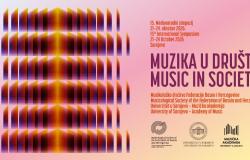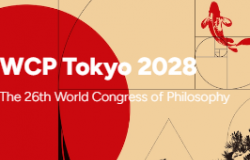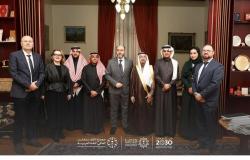Five young physicists from the UNSA Faculty of Natural Science and Mathematics Physics Department of stayed at CERN

This summer, 5 young physicists from the Physics Department of the Faculty of Science and Mathematics of the University of Sarajevo stayed and worked at CERN. These are Dr. Amer Ajanović, researcher from the Department of Physics, and 4 students of the Department: Medina Dugonjić, Naida Ustavdić, Danis Bradarić and Nafija Ibrišimović.
Nafija won the opportunity to do an internship at CERN's Non-Member States Summer Student (NMS SS) program. She worked on the Compact Muon Solenoid (CMS) experiment at CERN's famous Large Hadron Collider (LHC). The LHC is one of the main focuses of all groups at CERN, and aims to establish experiments that try to unravel the 3 fundamental secrets of the Universe: 1. how it was created; 2. what it consists of; 3. how it will develop further. With that in mind, 4 basic experiments were created on the 27 kilometers of the LHC tunnel: the previously mentioned CMS, A Toroidal LHC ApparatuS (ATLAS), Large Hadron Collider beauty (LHCb) and A Large Ion Collider Experiment (ALICE). CMS investigates the Higgs boson, supersymmetry and searches for new physics using solenoidal magnetic induction (as opposed to ATLAS which uses toroidal induction). CMS focuses on the detection of muons resulting from colliding particle beams at the LHC, hence its name: the compact muon solenoid (CMS). Nafia's task was to investigate the application of the CMS particle identification algorithm in the recognition of hadronic tau decays.
Danis, Naida and Medina won the opportunity to work in the famous Accelerator Beam Physics (ABP) group at the Department for Hadron Sources and Linear accelerators. The main task of the ABP group is the advancement of particle accelerator technology, and they are engaged in the research of particle beam dynamics, the design and optimization of future accelerators and particle sources (like the LHC's more advanced versions, the High-Luminoscity LHC and the Future Circular Collider (FCC)), the improvement of diagnostic tools for tracking and controlling particle beams, maintaining beam quality by researching the collective effects of particles, and researching new methods of particle acceleration (such as with the help of plasma and lasers). Ions produced at hadron sources within the ABP group are accelerated at linear accelerators and sent further to the CERN complex for all other research. Therefore, the stability of the particle beam at the LHC depends on the engagement of the ABP group. To this end, Danis, Naida and Medina were given tasks of importance for the further development of new linear accelerators and the stability of ions that are sent from the source through the links to the LHC. Danis thus worked on simulations of the behavior of ion beams extracted from the source and directed inside a low-energy linear accelerator. Naida and Medina worked together on experimental source control and obtaining measurements directly at the source. Naida then processed the spectral compositions of the elements measured at the source, while Medina worked on setting up an automatic data meter from the source via CERN's servers.
In the ABP group of CERN is Dr. Ajanović, who is working to deepen cooperation between the University of Sarajevo and CERN through scientific research relevant to both institutions through the Sarajevo Accelerator Jona project. He works on the design of compact linear accelerators, research on the dynamics of particle beams in them, optimization of experimental equipment for beam stability control, training of ion sources with other elements of the accelerator, and on the development of new methods for accelerating and applying particles. This research is of importance to CERN in the application of such technology in society (such as new medical accelerators), for the further development of beam stability at the ALICE experiment of the LHC, as well as for the optimization of the design of CERN's new linac-based particle collider, the Compact Linear Collider (CLIC). On the other hand, it is important for the University of Sarajevo, because the compact linear accelerator thus enabled will be brought to our Department of Physics in the next two years, where further research of such technology, experimental particle physics, and its application in society will be carried out. In other words, one of the main tasks of the Sarajevo Jona Accelerator project is the exchange of knowledge and skills between CERN and the Physics Department of PMF UNSA for the purpose of advancing science, technology and the application of accelerators in the world, which also includes numerous student projects, such as 3 were formed this year in the form of student internships at CERN.
Nafija, Danis, Naida and Medina successfully completed their projects at CERN, while Dr. Ajanović will present the results of his research and the status of the Sarajevo Accelerator Jon project soon at the Department.
For more information, write to: amer.ajanovic@pmf.unsa.ba







